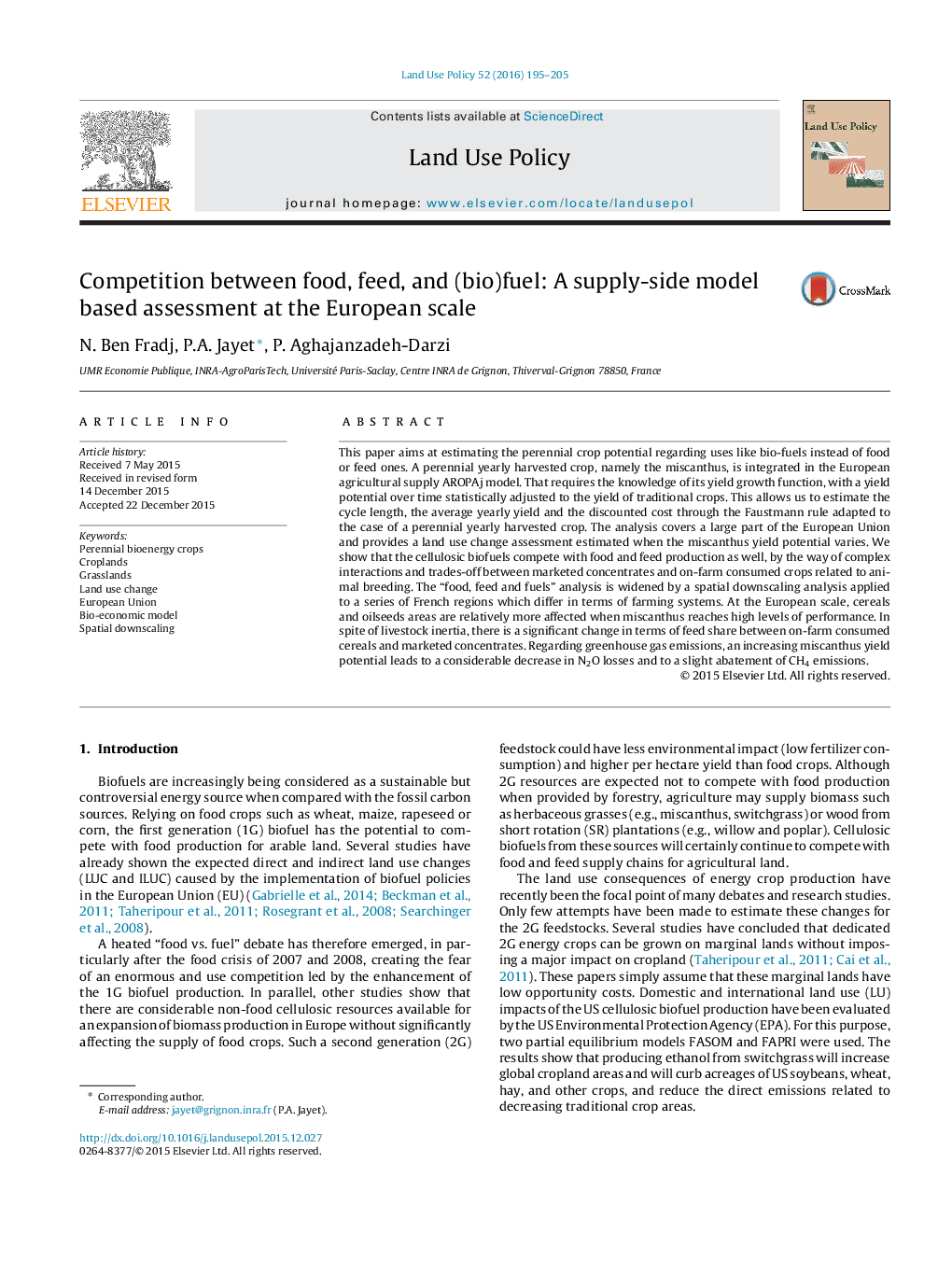| کد مقاله | کد نشریه | سال انتشار | مقاله انگلیسی | نسخه تمام متن |
|---|---|---|---|---|
| 6547454 | 160093 | 2016 | 11 صفحه PDF | دانلود رایگان |
عنوان انگلیسی مقاله ISI
Competition between food, feed, and (bio)fuel: A supply-side model based assessment at the European scale
ترجمه فارسی عنوان
مسابقه بین مواد غذایی، خوراک و سوخت زیستی: ارزیابی مبتنی بر مدل عرضه در مقیاس اروپایی
دانلود مقاله + سفارش ترجمه
دانلود مقاله ISI انگلیسی
رایگان برای ایرانیان
کلمات کلیدی
محصولات بیولوژیکی چند ساله، سیب زمینی، چمنزارها، تغییر کاربری زمین، اتحادیه اروپا، مدل اقتصادی بیولوژیکی، مقیاس فضایی،
موضوعات مرتبط
علوم زیستی و بیوفناوری
علوم کشاورزی و بیولوژیک
جنگلداری
چکیده انگلیسی
This paper aims at estimating the perennial crop potential regarding uses like bio-fuels instead of food or feed ones. A perennial yearly harvested crop, namely the miscanthus, is integrated in the European agricultural supply AROPAj model. That requires the knowledge of its yield growth function, with a yield potential over time statistically adjusted to the yield of traditional crops. This allows us to estimate the cycle length, the average yearly yield and the discounted cost through the Faustmann rule adapted to the case of a perennial yearly harvested crop. The analysis covers a large part of the European Union and provides a land use change assessment estimated when the miscanthus yield potential varies. We show that the cellulosic biofuels compete with food and feed production as well, by the way of complex interactions and trades-off between marketed concentrates and on-farm consumed crops related to animal breeding. The “food, feed and fuels” analysis is widened by a spatial downscaling analysis applied to a series of French regions which differ in terms of farming systems. At the European scale, cereals and oilseeds areas are relatively more affected when miscanthus reaches high levels of performance. In spite of livestock inertia, there is a significant change in terms of feed share between on-farm consumed cereals and marketed concentrates. Regarding greenhouse gas emissions, an increasing miscanthus yield potential leads to a considerable decrease in N2O losses and to a slight abatement of CH4 emissions.
ناشر
Database: Elsevier - ScienceDirect (ساینس دایرکت)
Journal: Land Use Policy - Volume 52, March 2016, Pages 195-205
Journal: Land Use Policy - Volume 52, March 2016, Pages 195-205
نویسندگان
N. Ben Fradj, P.A. Jayet, P. Aghajanzadeh-Darzi,
